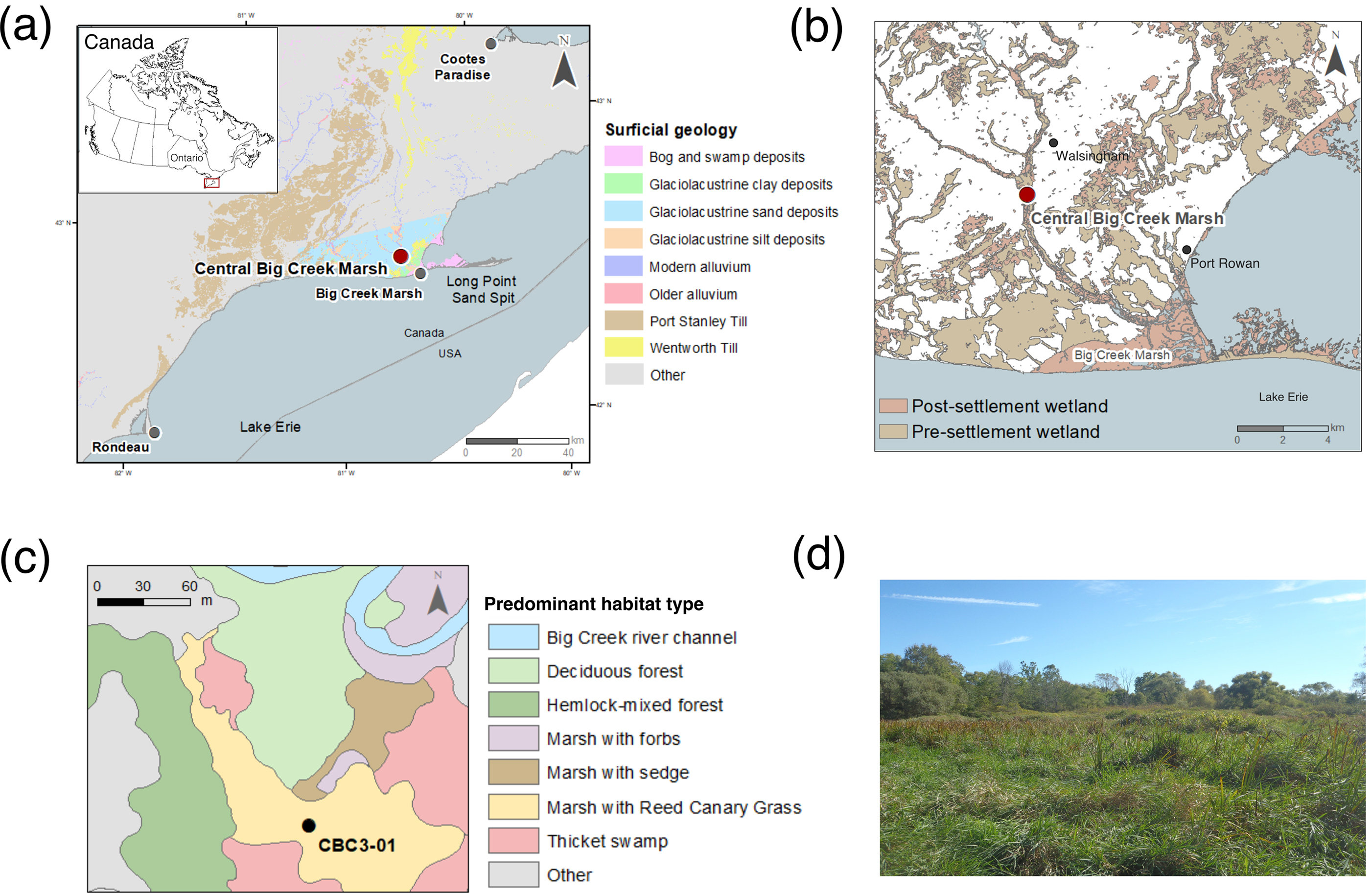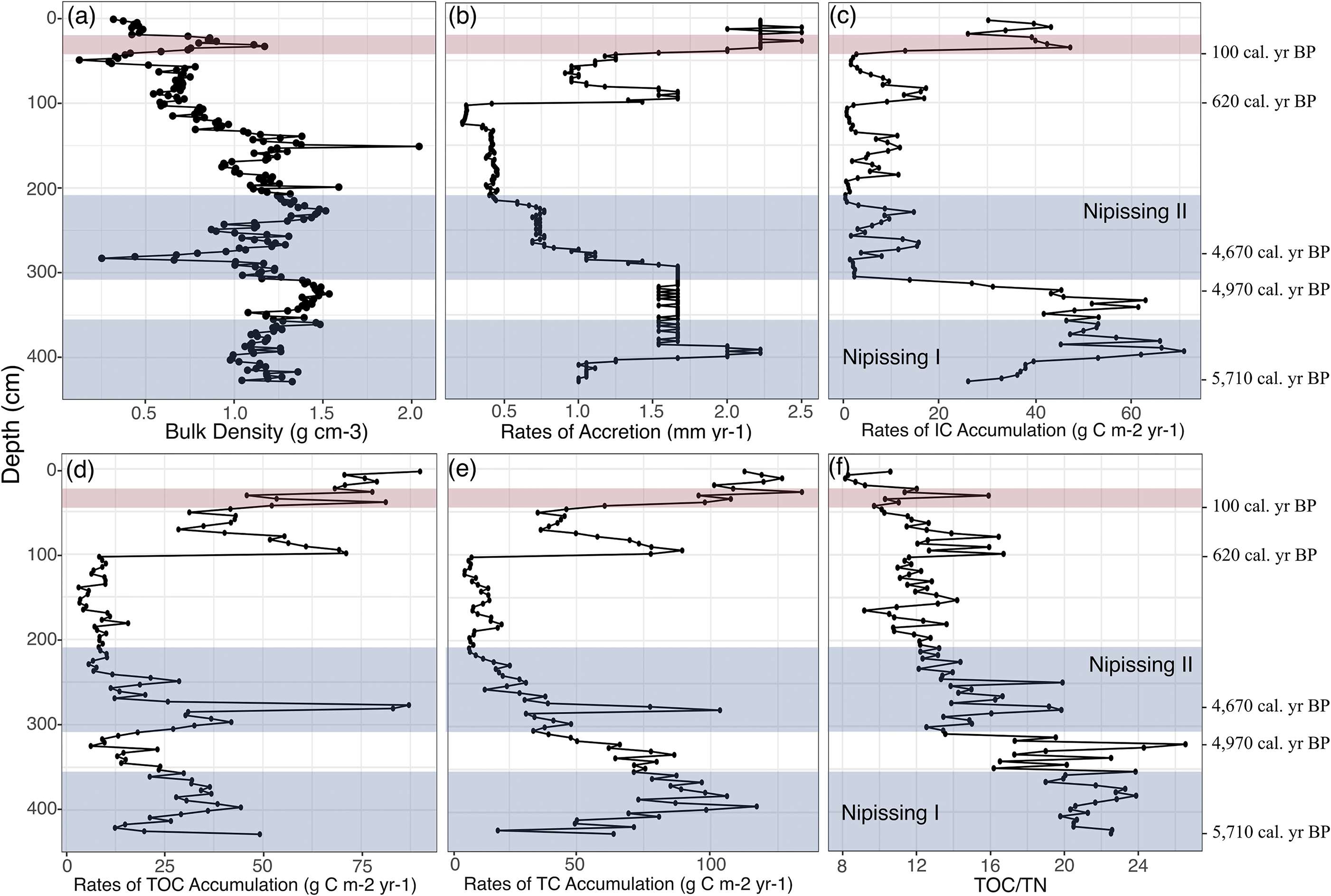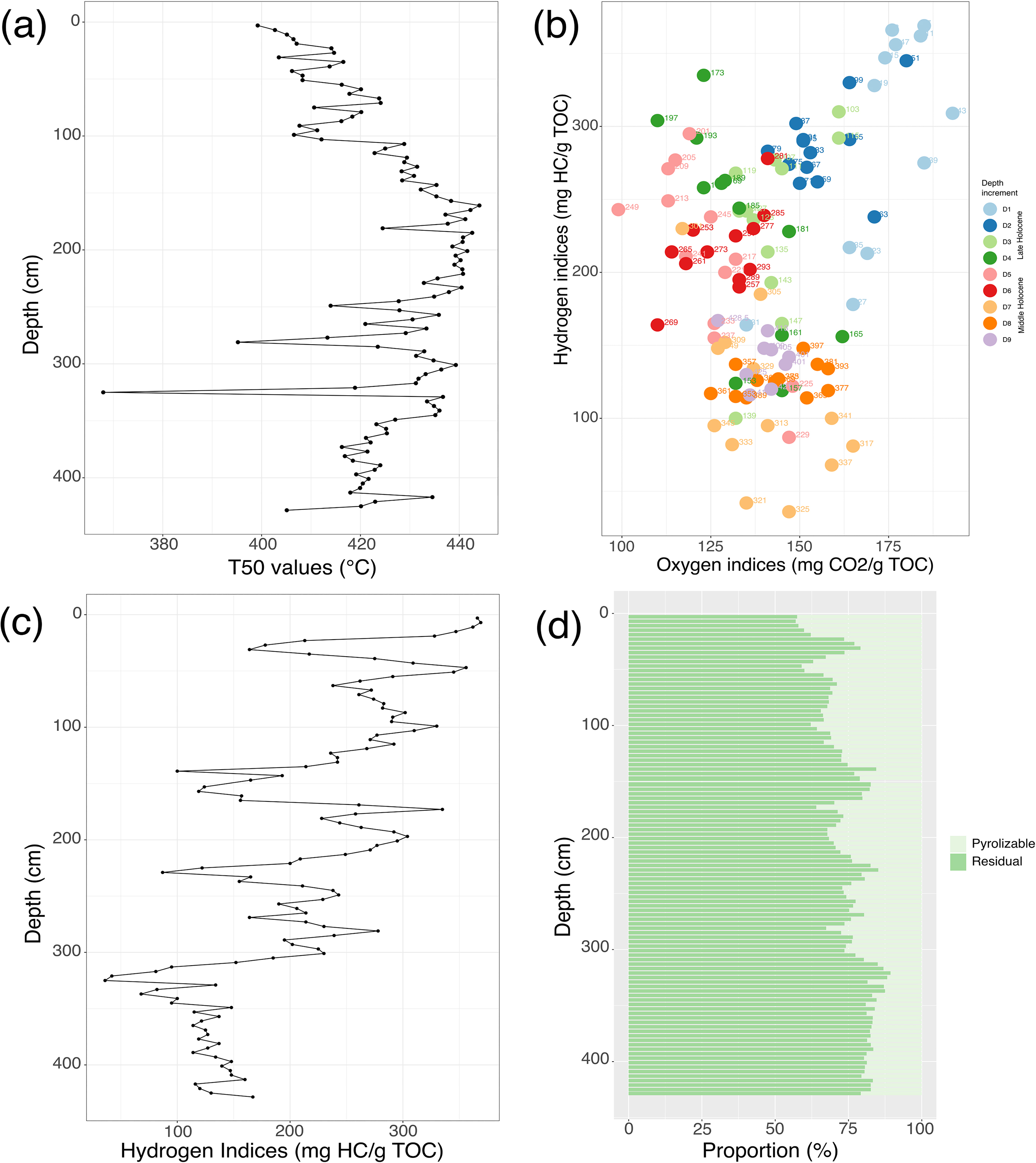Introduction
There is a need for improved quantifications of soil carbon dynamics because of the potential for the soil carbon pool to help mitigate or amplify anthropogenic-induced global warming. However, soil carbon accumulation in the terrestrial biosphere remains challenging to quantify due to high spatial and temporal variability (
Archer 2010;
Ciais et al. 2014). Wetland soils are recognized as a significant carbon pool with potential to take up or release enough carbon to influence the global climate while simultaneously supporting biodiversity and cultural value (
Heimann and Reichmann 2008;
Petrescu et al. 2015;
Dinerstein et al. 2020;
Pyke et al. 2021). Yet, the overall size of wetland soil carbon stocks and their vulnerabilities to disturbance remain poorly constrained (
Kolka et al. 2018).
Freshwater marshes are a broad group of wetlands characterized by emergent, soft-stemmed herbaceous vegetation with the capacity to tolerate saturated soils and dynamic hydrological conditions. These marshes are prevalent in the temperate region and have been widely drained and converted to agricultural use (
Zoltai 1988;
Reddy and Delaune 2008;
Mitsch and Gosselink 2015). While freshwater marsh soils are generally classified as mineral soils with low organic matter content, freshwater marshes support significant organic carbon burial over decades, centuries, and millennia, and can contain peat horizons (
Loder and Finkelstein 2020). Estimates of recent rates of soil organic carbon (SOC) accumulation in upper sediments of freshwater marshes in temperate North America typically exceed 150 g C m
−2 year
−1 (
Loder and Finkelstein 2020;
Creed et al. 2022). However, available data extending over century to millennial timescales suggest that these rates are not sustained, and eventually decline as some carbon is lost (
Loder and Finkelstein 2020). While the causes of declines in SOC accumulation rates over time vary by wetland type and context, they are necessary to understand to accurately model and predict future wetland carbon balances.
In some coastal wetlands for example, high recent rates of carbon accumulation have been linked to sea level rise (e.g.,
McTigue et al. 2019;
Rogers et al. 2019;
Gore et al. 2024). Elsewhere, increases in biomass production due to eutrophication or the arrival of invasive wetland emergent plants lead to increased rates of SOC accumulation in surficial soils (
Bansal et al. 2019;
Spivak et al. 2019;
Peteet et al. 2020;
Gailis et al. 2021). In northern peatlands, it is well established that long-term rates of carbon accumulation are lower than recent rates because of SOC losses over time due to decomposition (e.g.,
Clymo 1984), but that extrinsic factors (e.g., climatic changes, wildfire, hydrological change, and human activity) can influence both rates (e.g.,
Packalen and Finkelstein 2014;
Marrs et al. 2019;
Young et al. 2019). For freshwater marshes, further work is needed to determine how intrinsic (e.g., organic matter lability and long-term decay) and extrinsic factors (e.g., increases in sediment fluxes and hydrological changes) affect recent versus long-term rates of SOC accumulation; this is necessary to ensure that rates accurately capture the strengths of natural carbon sinks. Otherwise, assuming that recent rates are sustained over the long-term may result in the overestimation of the strengths of natural carbon sinks and lead to negative outcomes including overly generous emission offsets (
Bridgham et al. 2014;
Neubauer 2014;
Young et al. 2019;
Gore et al. 2024).
Freshwater marshes bury and preserve autochthonous (in situ) and allochthonous (ex situ) organic carbon derived from the surrounding watershed due to their variable hydrological regimes (
Bridgham et al. 2006;
Drexler 2011;
Van de Broek et al. 2018). Consequently, carbon accounting in freshwater marshes has additional complexities, as there are multiple pathways from which carbon is derived and deposited over time. Thus the carbon stock in marsh soils may not solely reflect in situ production of organic matter (
Bridgham et al. 2006). Furthermore, freshwater marsh soils can contain both organic and inorganic carbon (
Mitsch and Gosselink 2015). Although inorganic carbon fractions can be negligible, carbonate burial may be significant in ecosystems where allochthonous sources of carbonate (e.g., coral reefs and lithogenic sources) are present (
Martin 2017;
Saderne et al. 2019;
Mueller et al. 2023) and needs to be differentiated from organic carbon burial for carbon accounting purposes.
This study focusses on long-term carbon accumulation in a riparian freshwater marsh, which formed in the Middle Holocene following lake level shifts induced by glacial isostasy in the lower Laurentian Great Lakes region. The objectives of this study were to characterize SOC accumulation regimes since wetland establishment, and to evaluate factors leading to elevated recent versus long-term rates of carbon accumulation. To address these objectives, we used radiometric dating, elemental analyses, programmed pyrolysis, and carbon to nitrogen (C/N) ratios.
Conclusion
Non-tidal freshwater marshes have potential to bury and store considerable amounts of organic and inorganic carbon. We demonstrate that elevated rates of SOC accumulation comprise both labile and inert fractions in non-tidal freshwater marshes in the temperate region, and can be as high as rates reported globally for salt marshes and peatlands when vertical accretion is sustained. These rates fluctuate in relation to major hydroclimatic events that caused water levels in the lower Great Lakes to fluctuate through the Holocene. Furthermore, they could be vulnerable and affected in the recent record by anthropogenic-induced activities (e.g., land use, the presence of invasive species, and nutrient loading) in the temperate region, which have potential to affect recent rates of organic carbon burial.
We show that organic carbon fractions in surface marsh soils are predominantly labile and will be subjected to decay in the ensuing centuries and millennia, thereby lowering long-term rates of organic carbon accumulation. Our finding that recent rates of SOC accumulation are attenuated over hundreds to thousands of years due to long-term decay corroborates findings in the coastal (tidal) wetland and peatland literature, and confirms that the extrapolation of recent rates over centuries and millennia will lead to overestimates of greenhouse gas removals in wetland carbon budgets (
Mudd et al. 2009;
Bridgham et al. 2014;
Young et al. 2019;
Gore et al. 2024). Because of long-term decay and variability in organic matter quality throughout the marsh paleorecord, it is critical to consider the entire profile and all carbon fractions when quantifying the climate mitigation potential of freshwater marsh soils and their role as a natural climate solution. Otherwise, high recent rates of SOC accumulation in freshwater marsh soils may provide a false sense of success in mediating the climate crisis if applied as carbon offsets over longer time scales.






